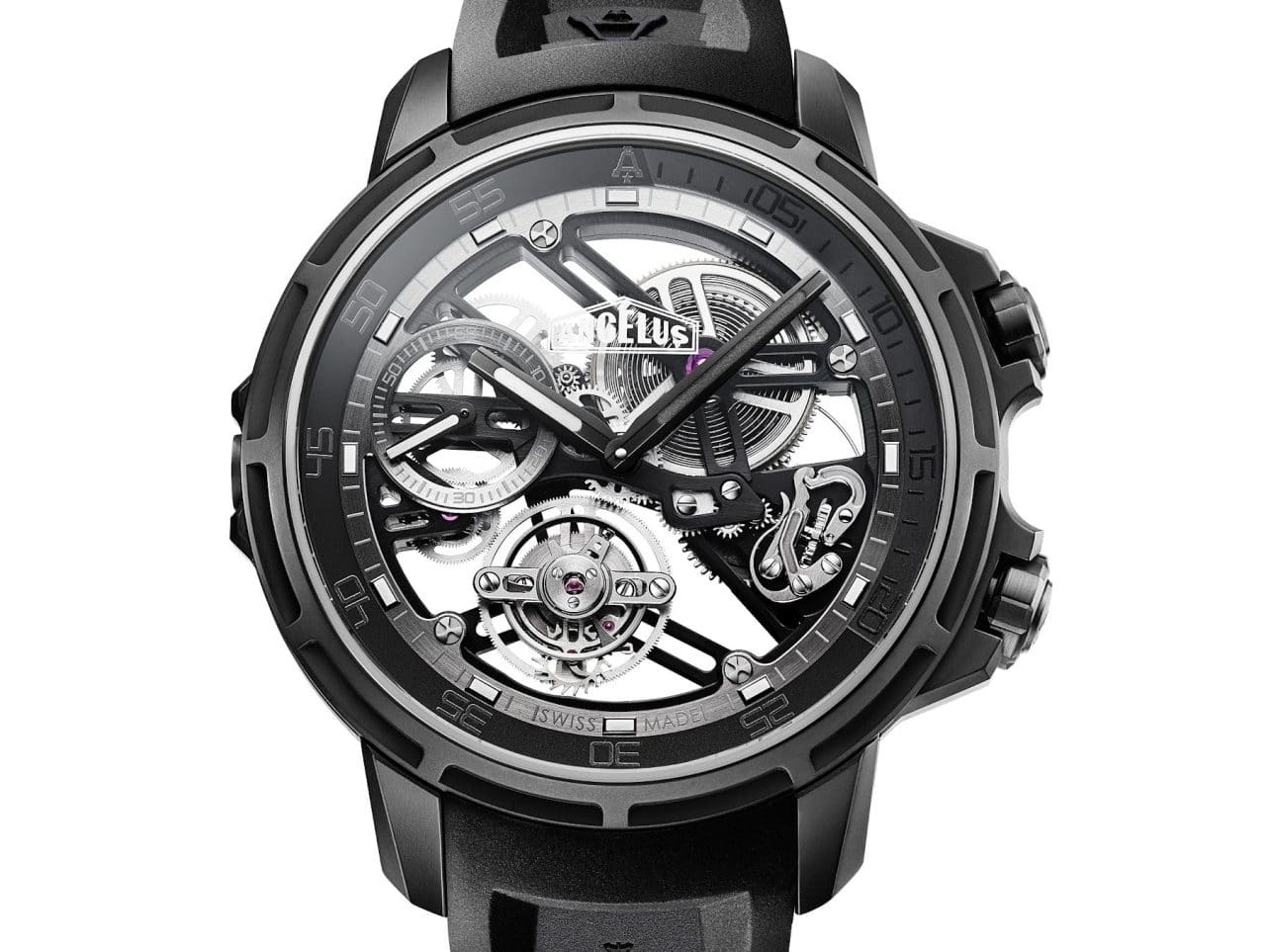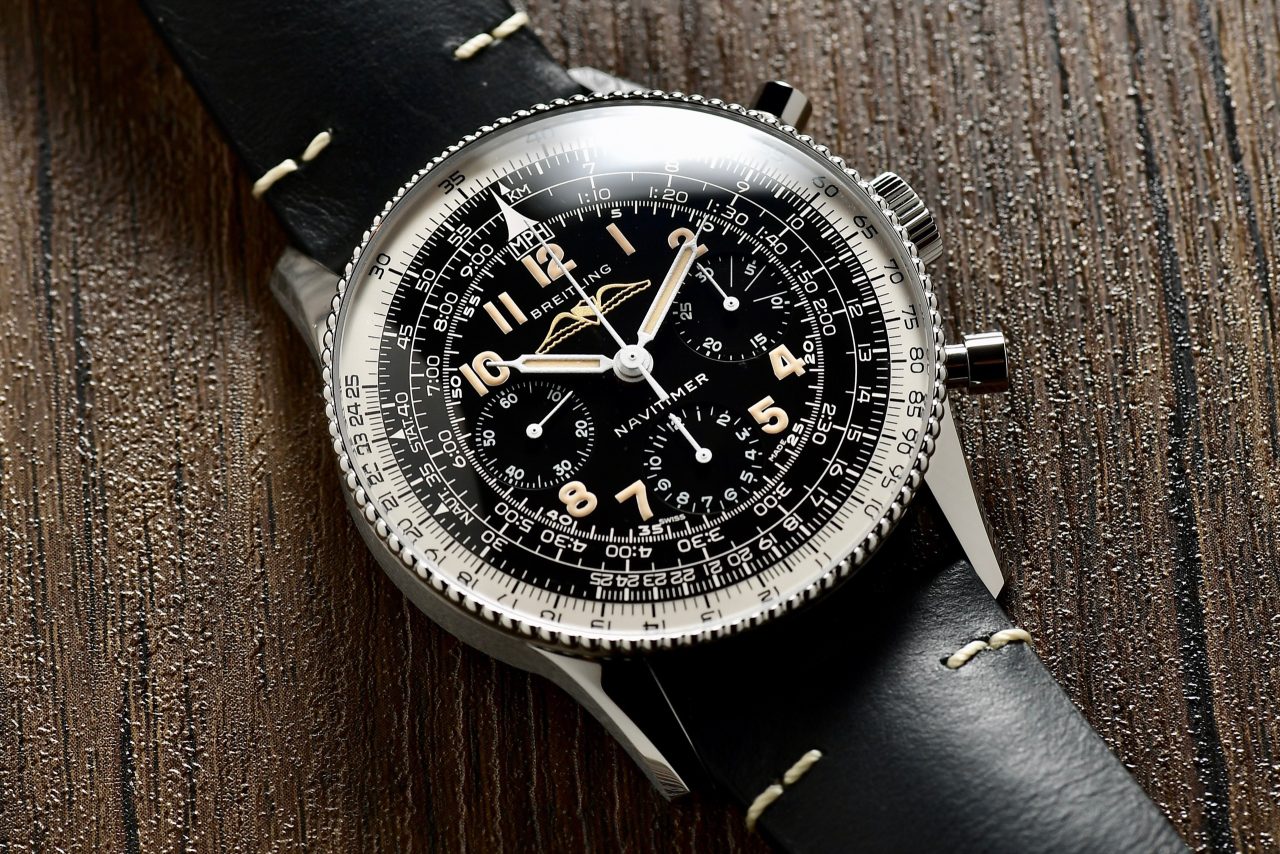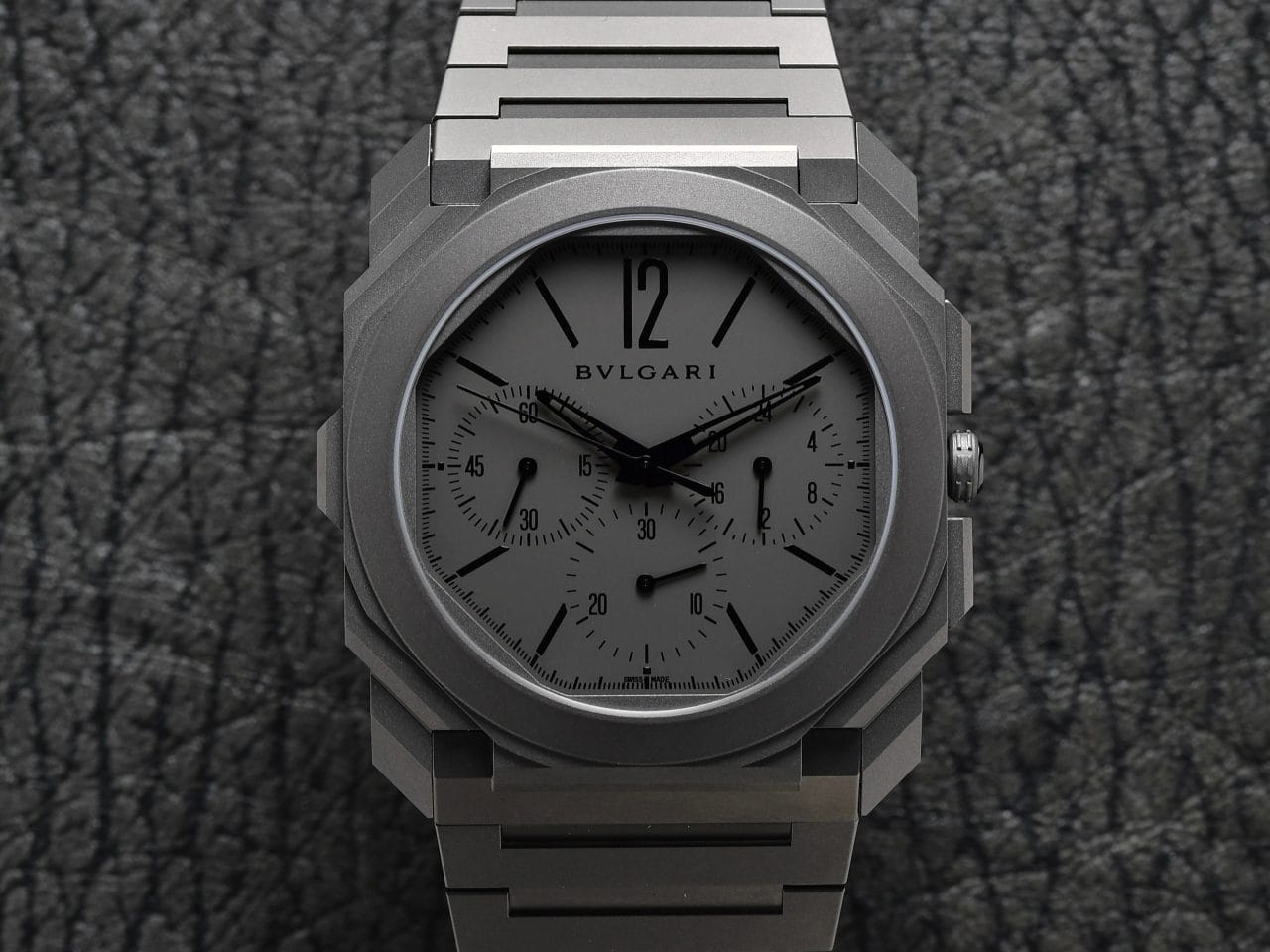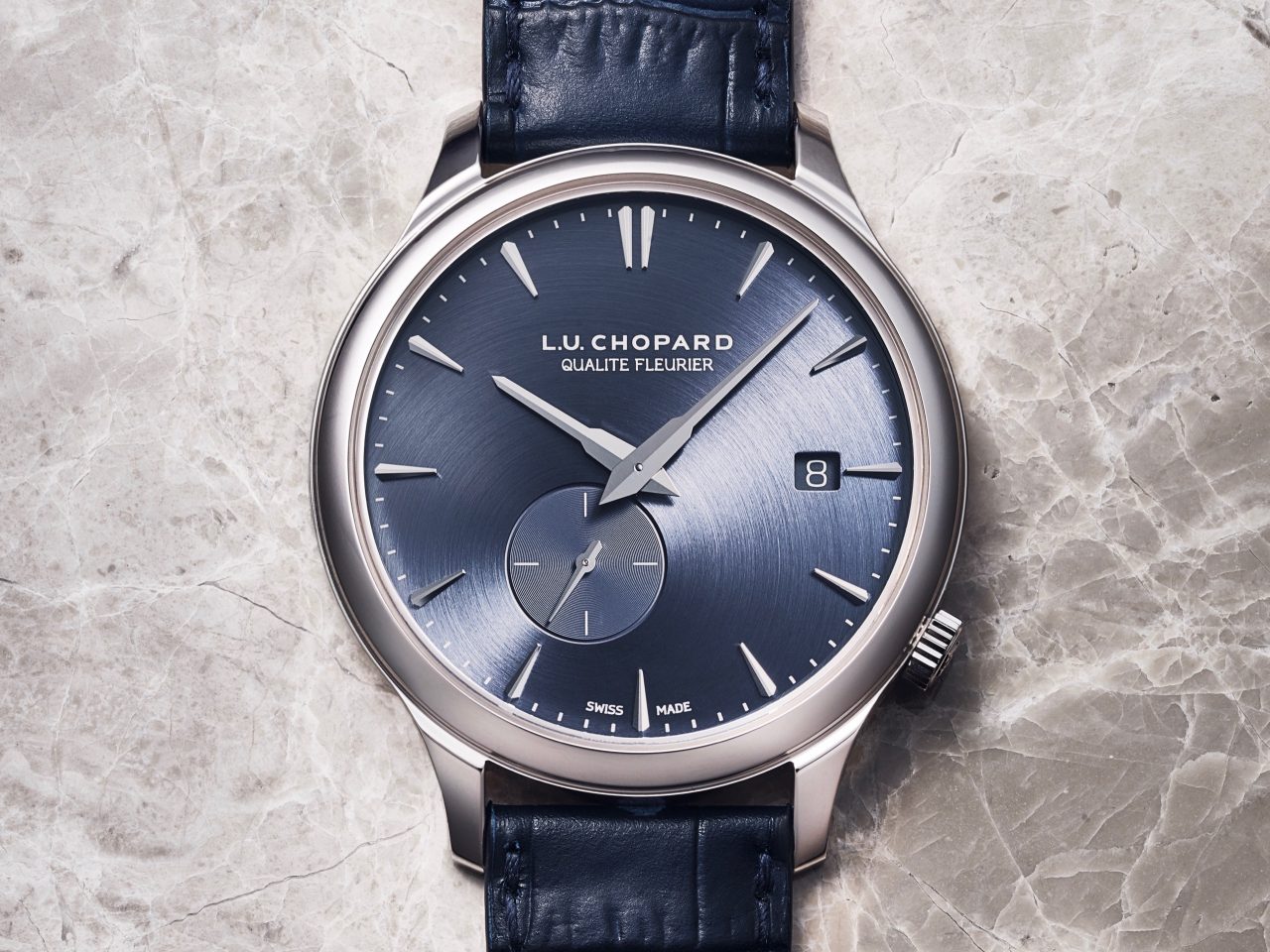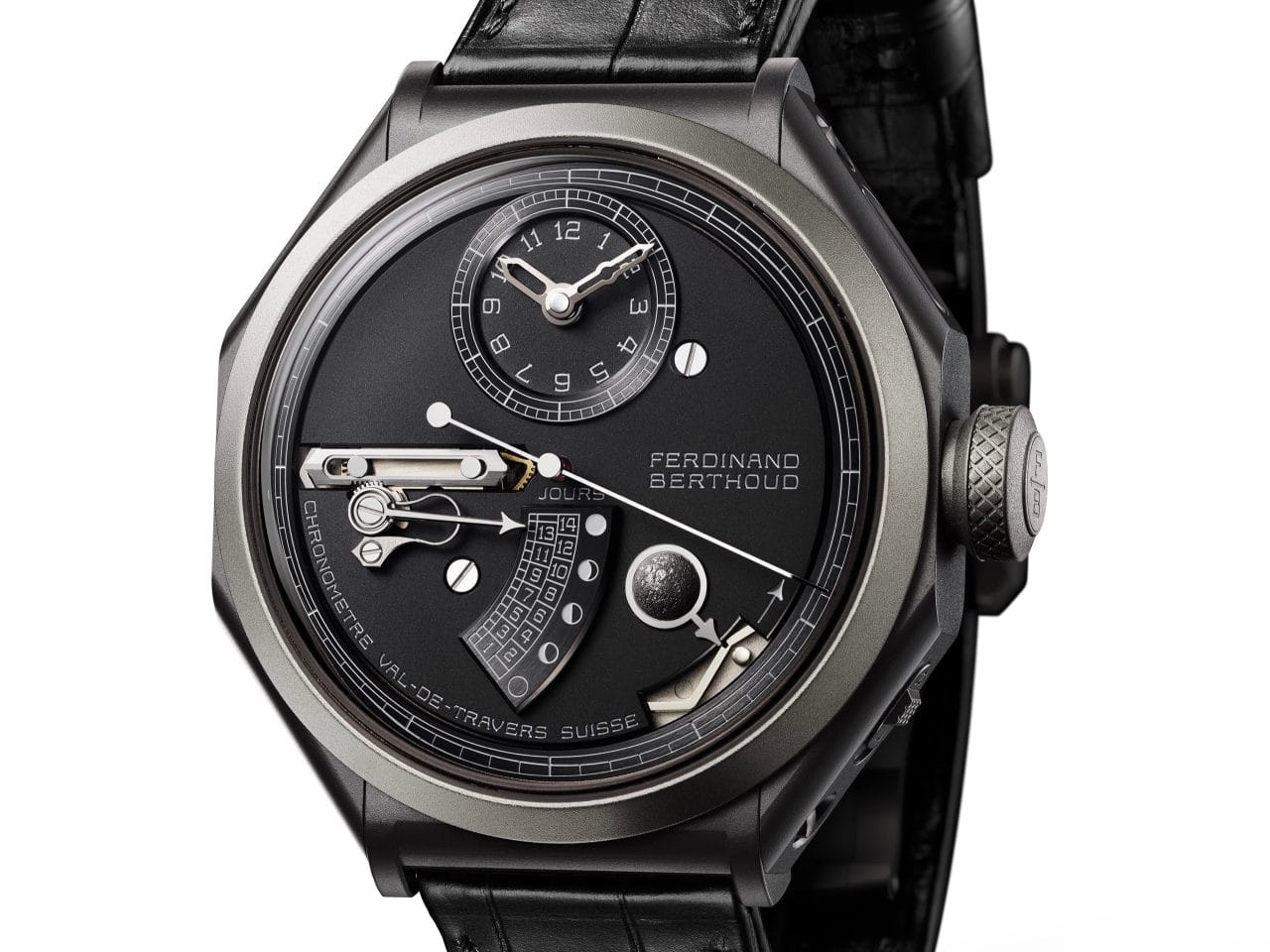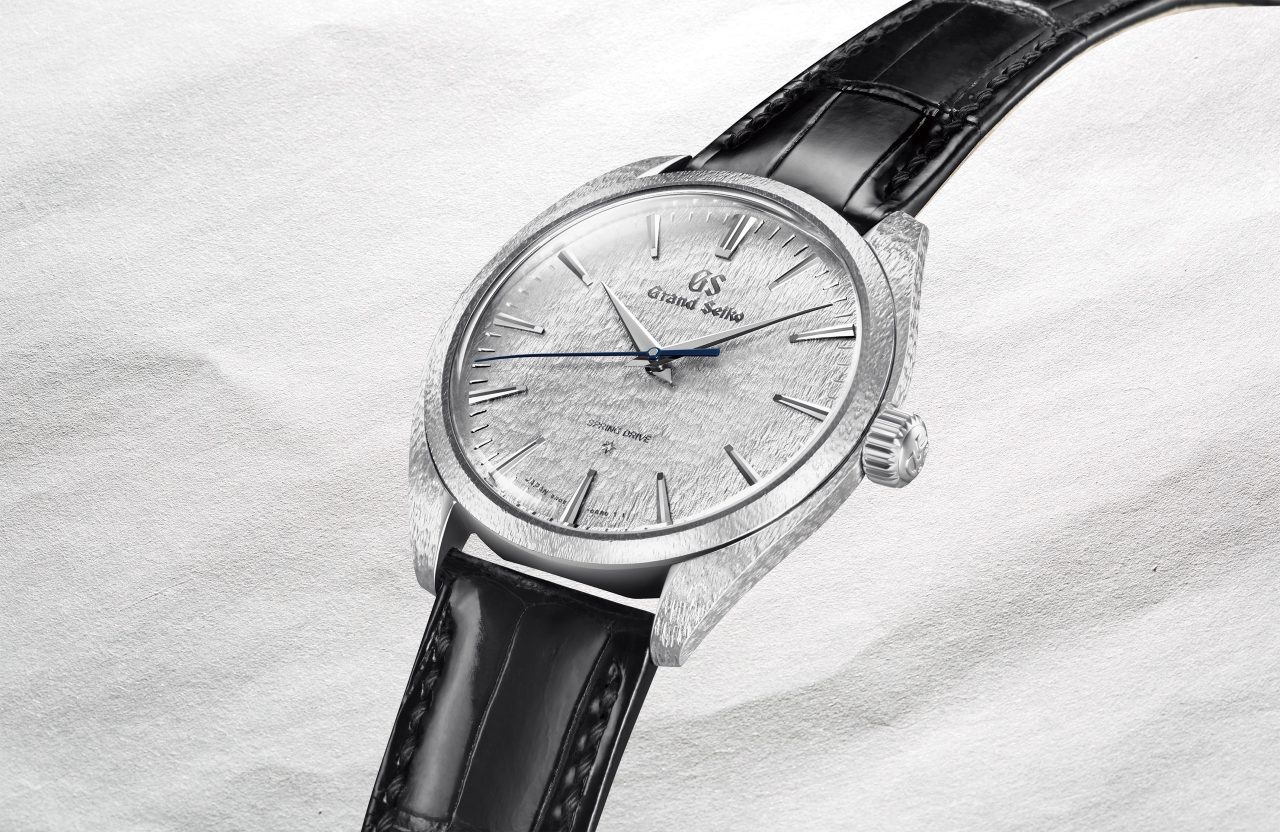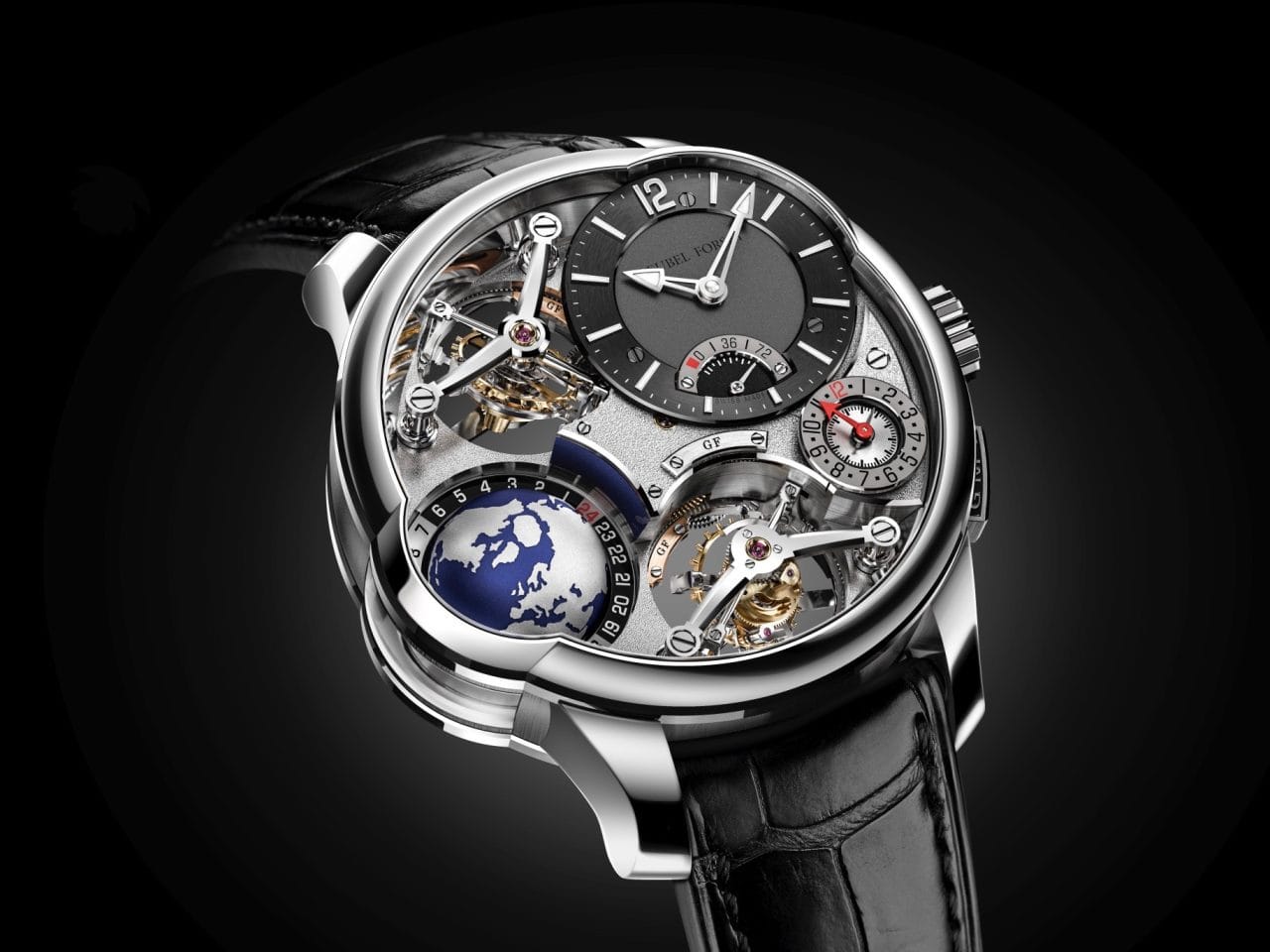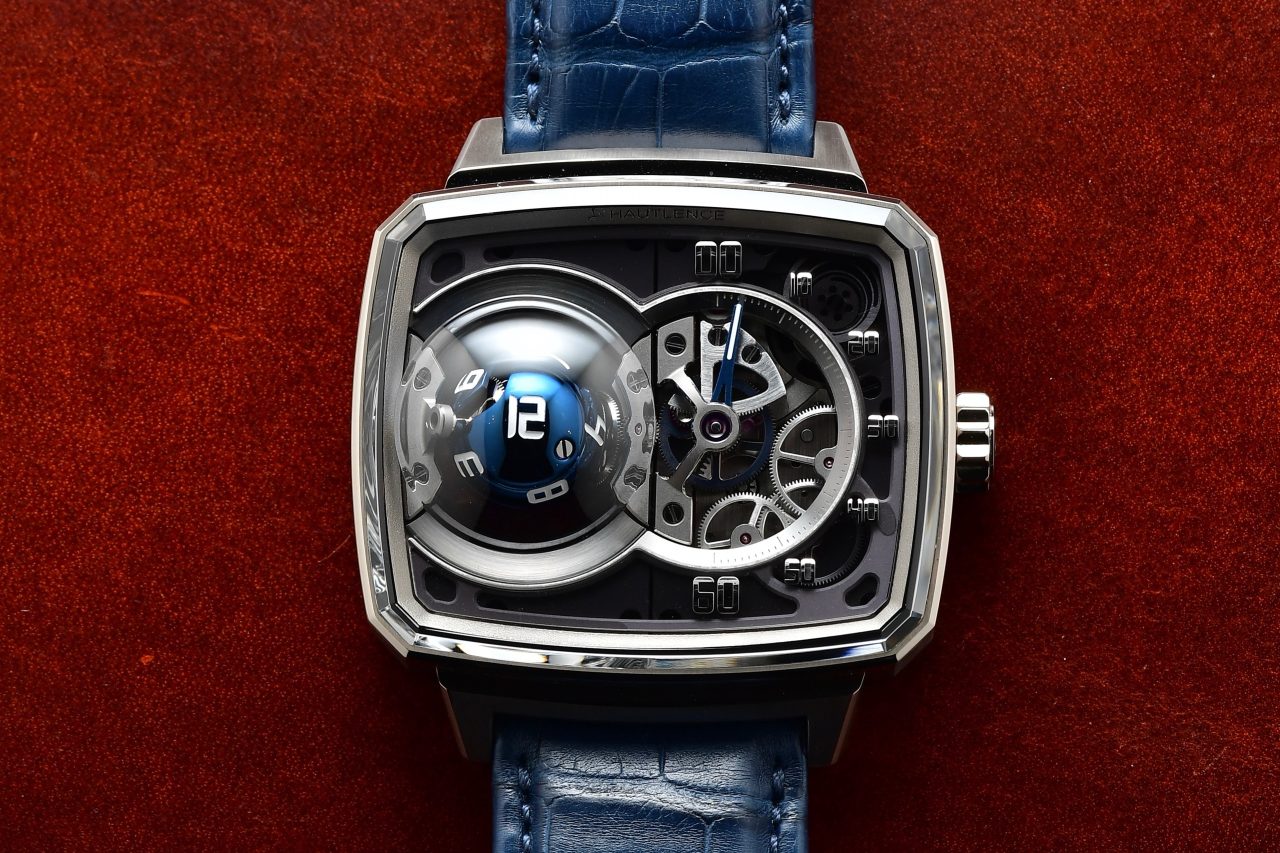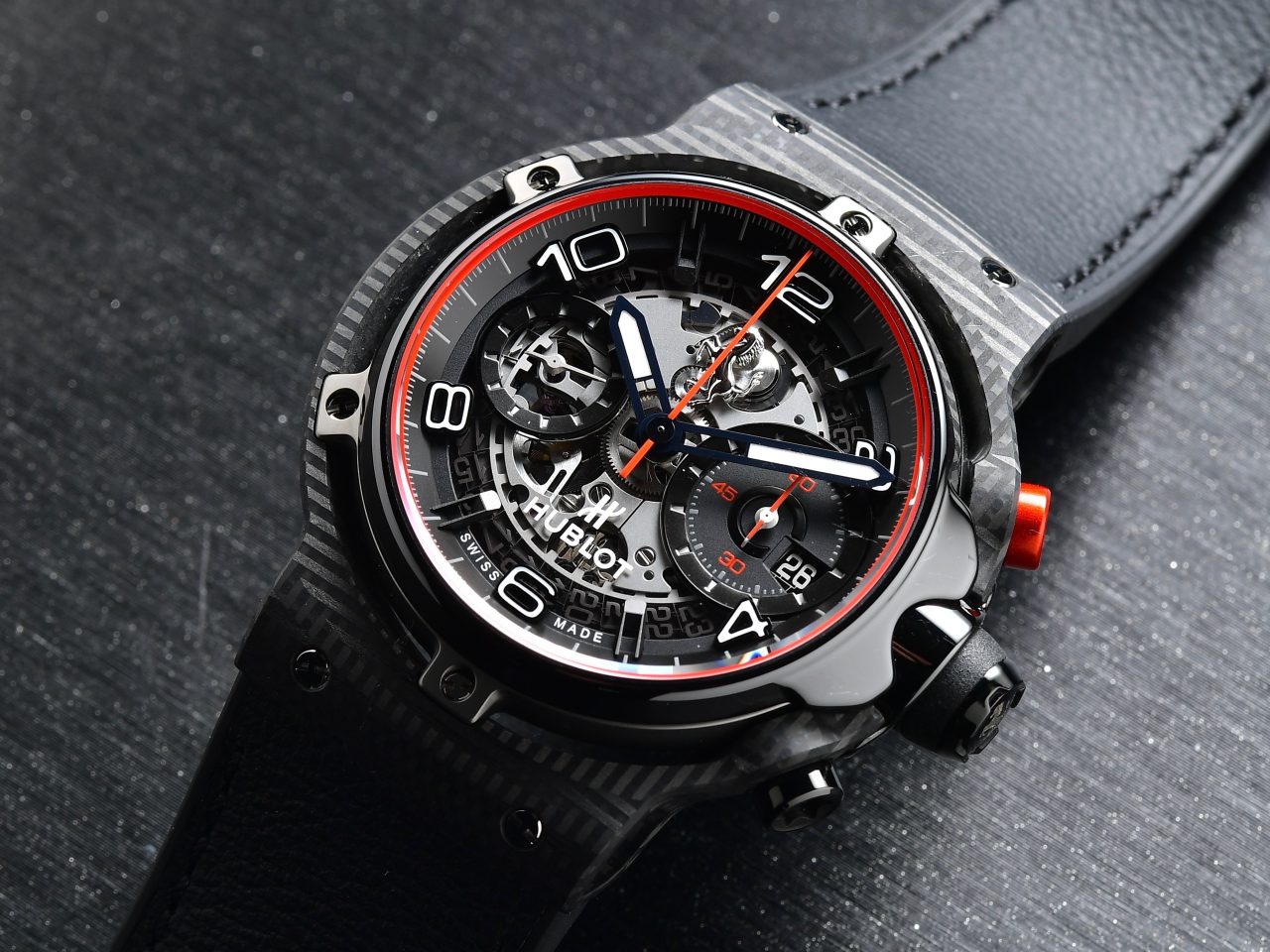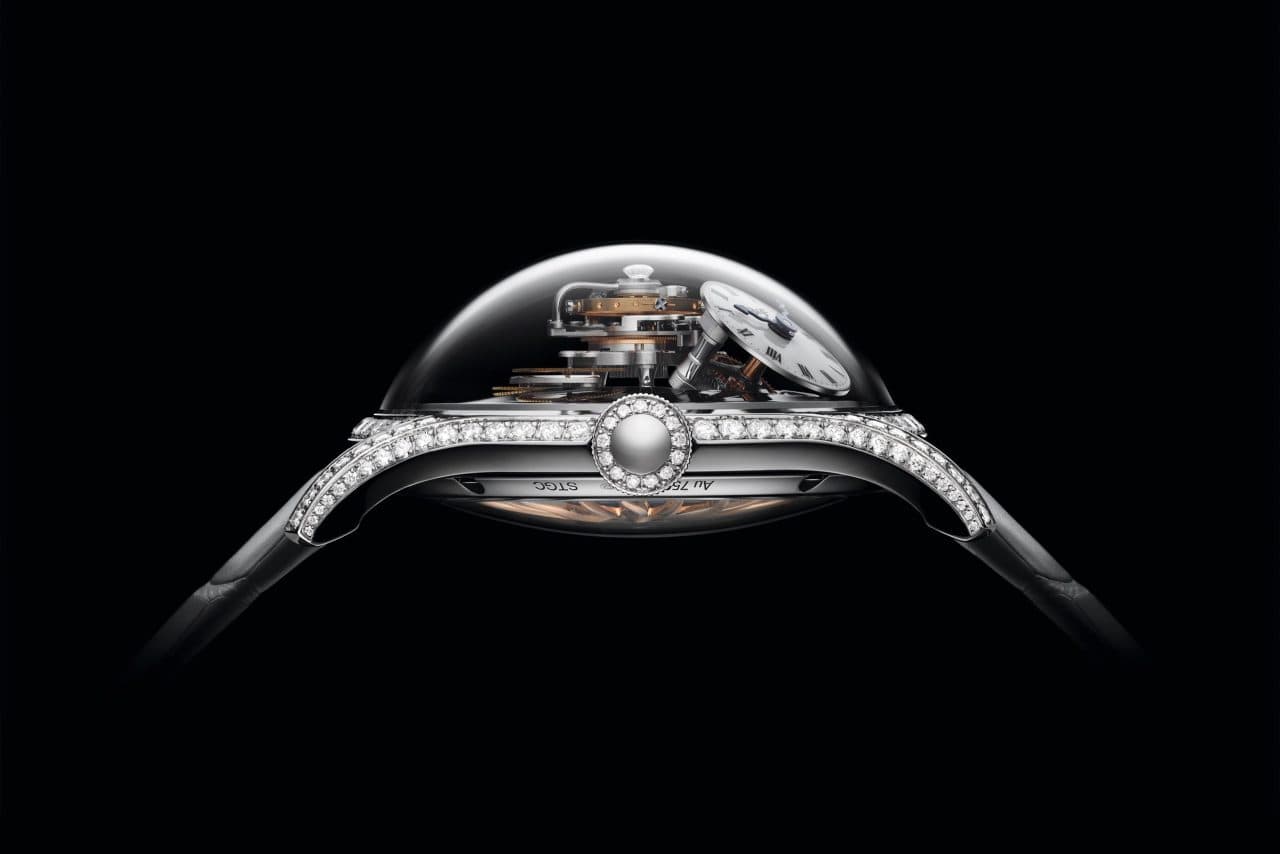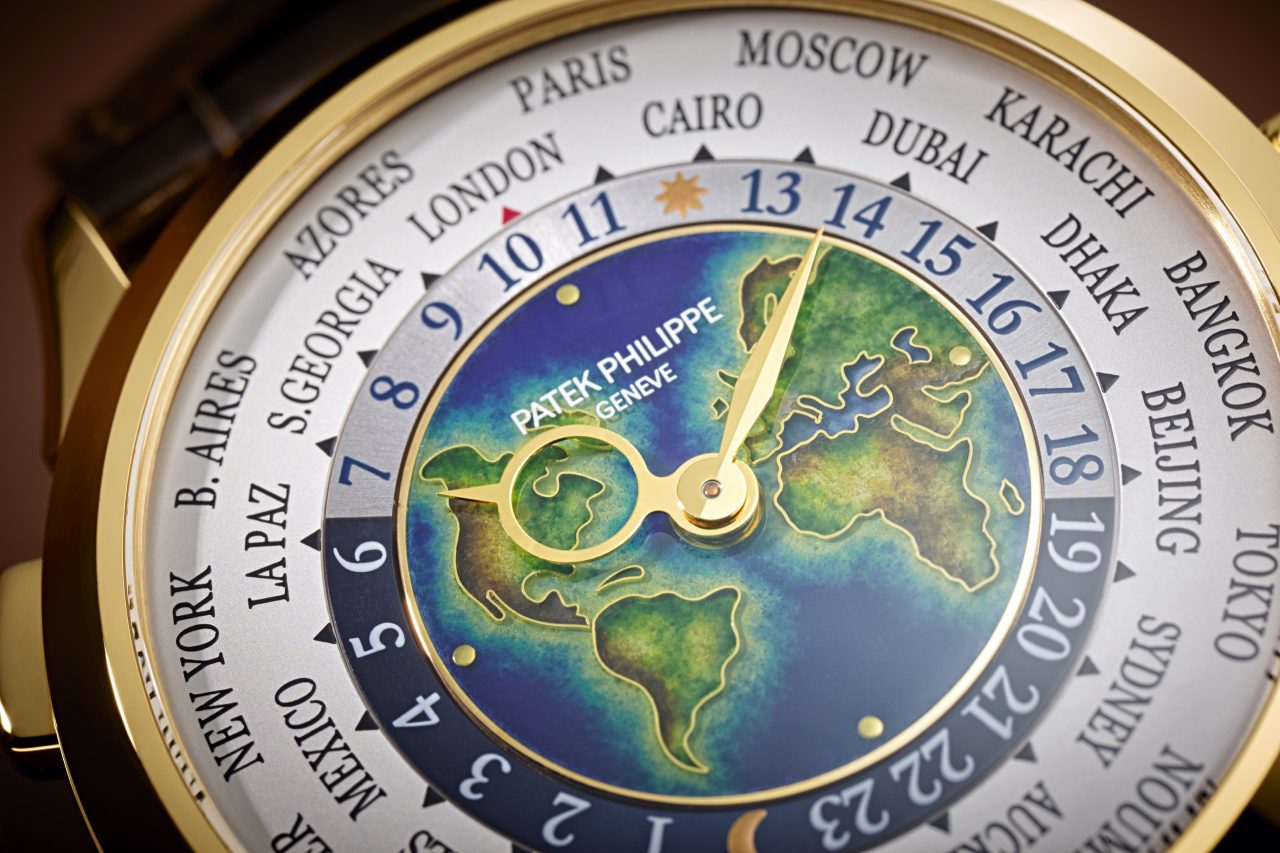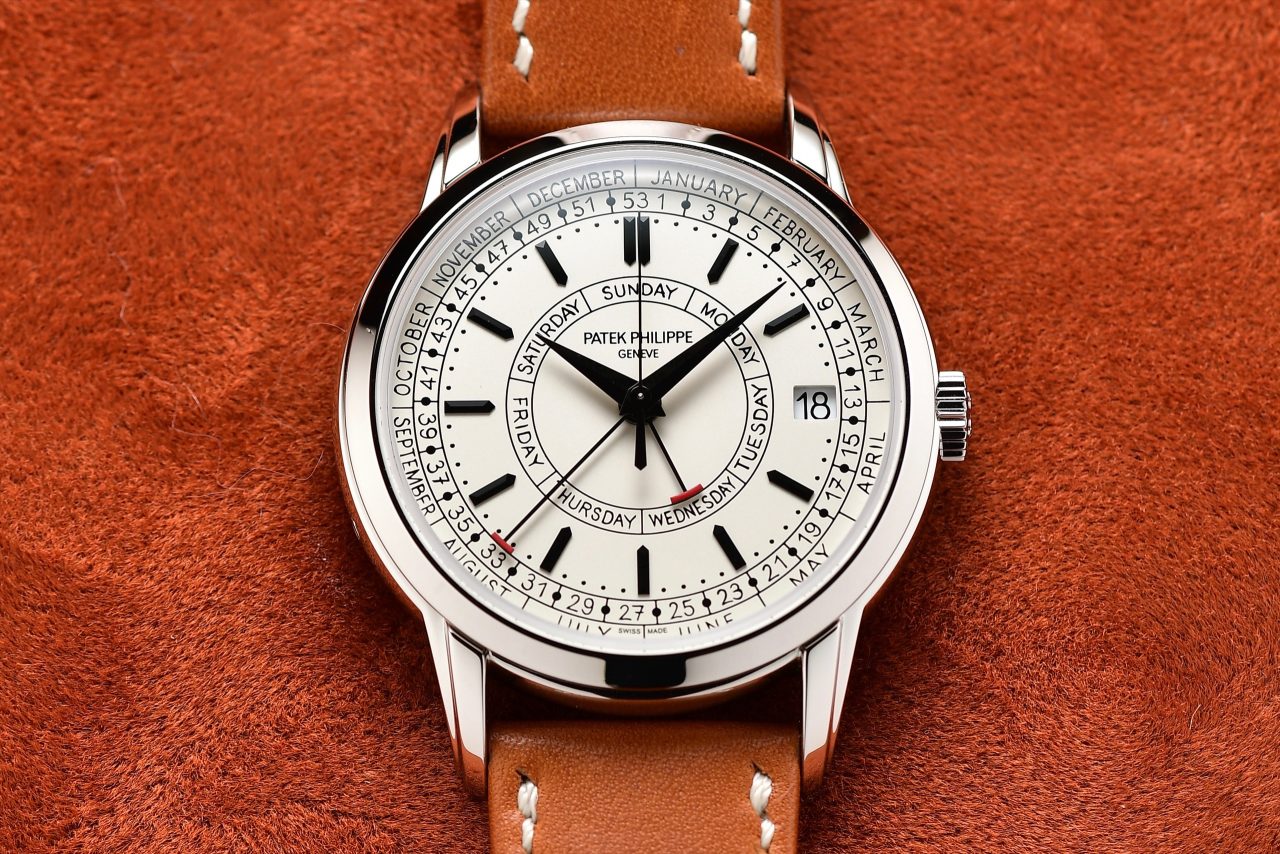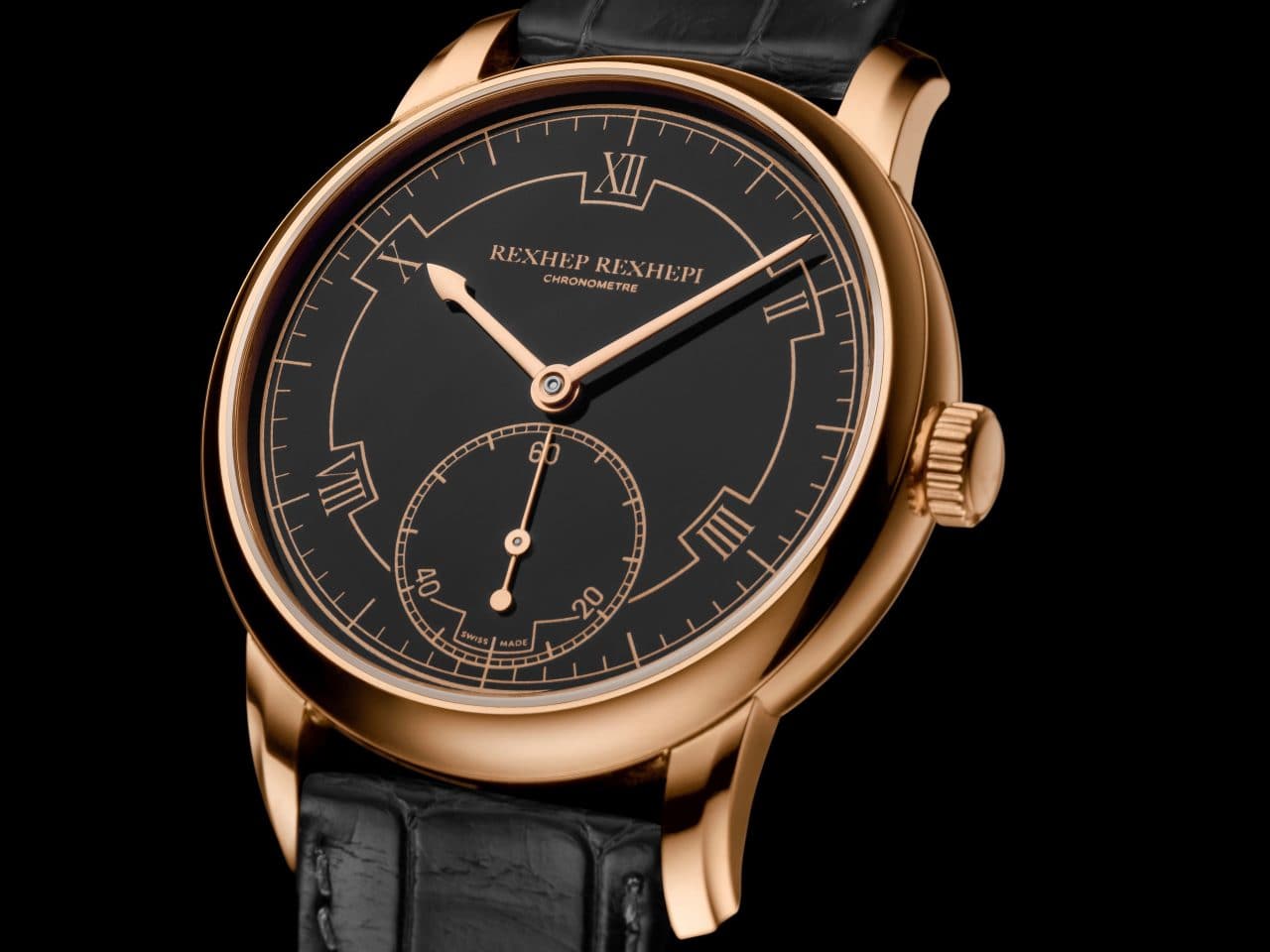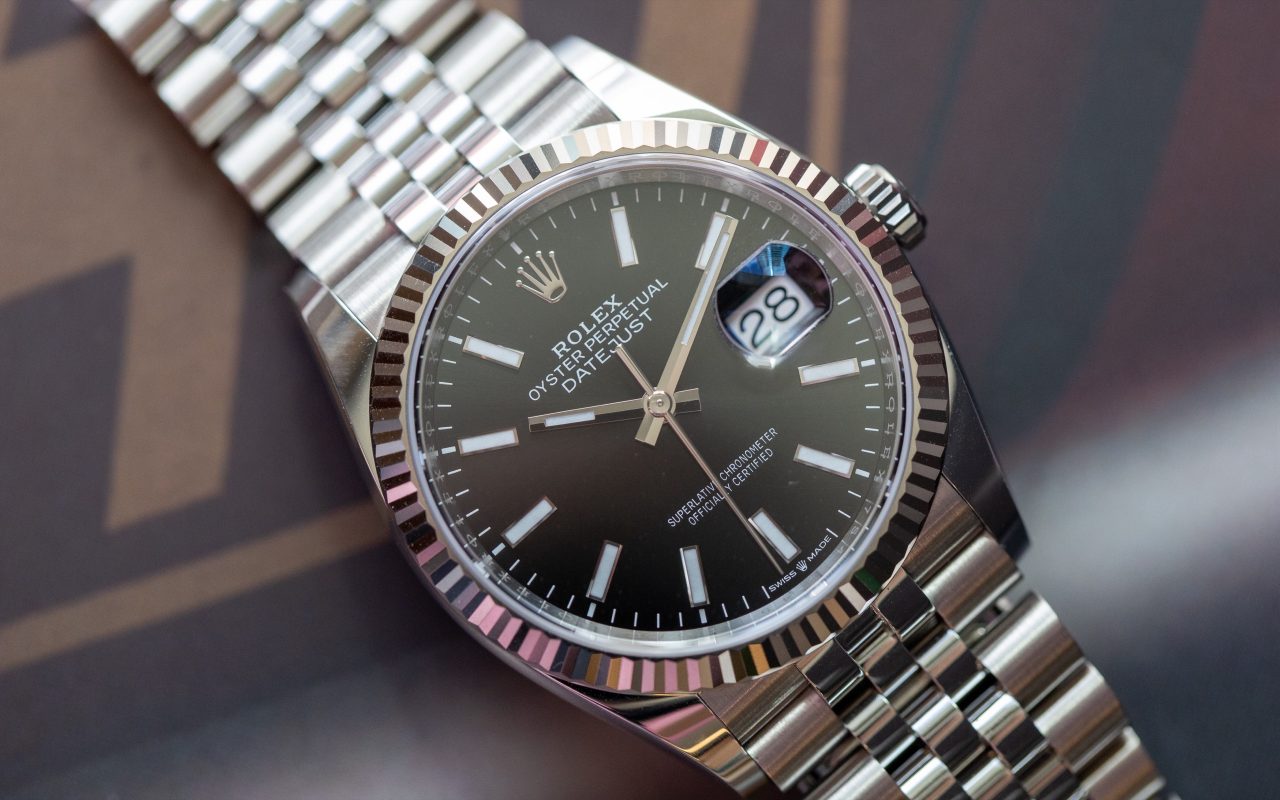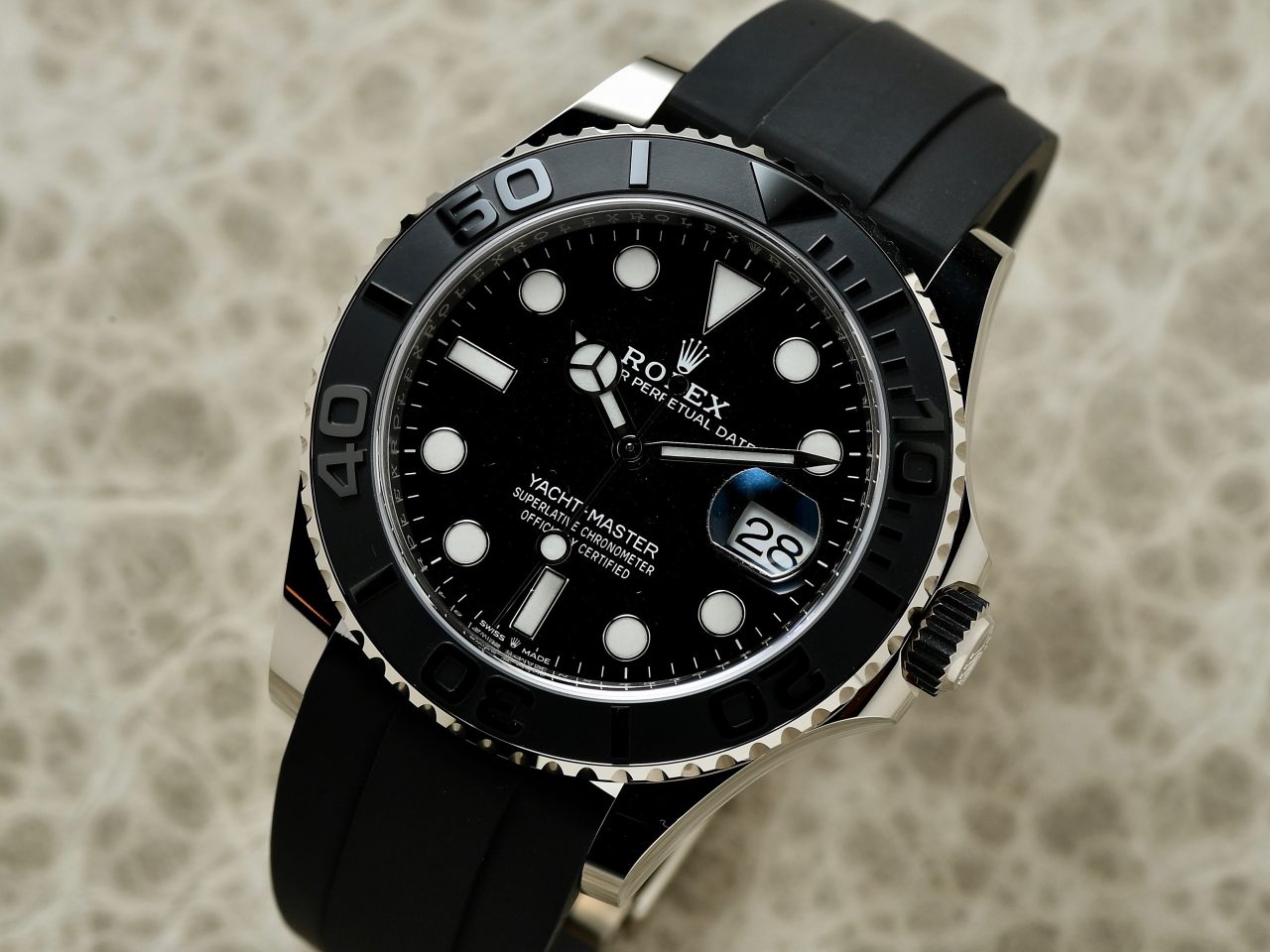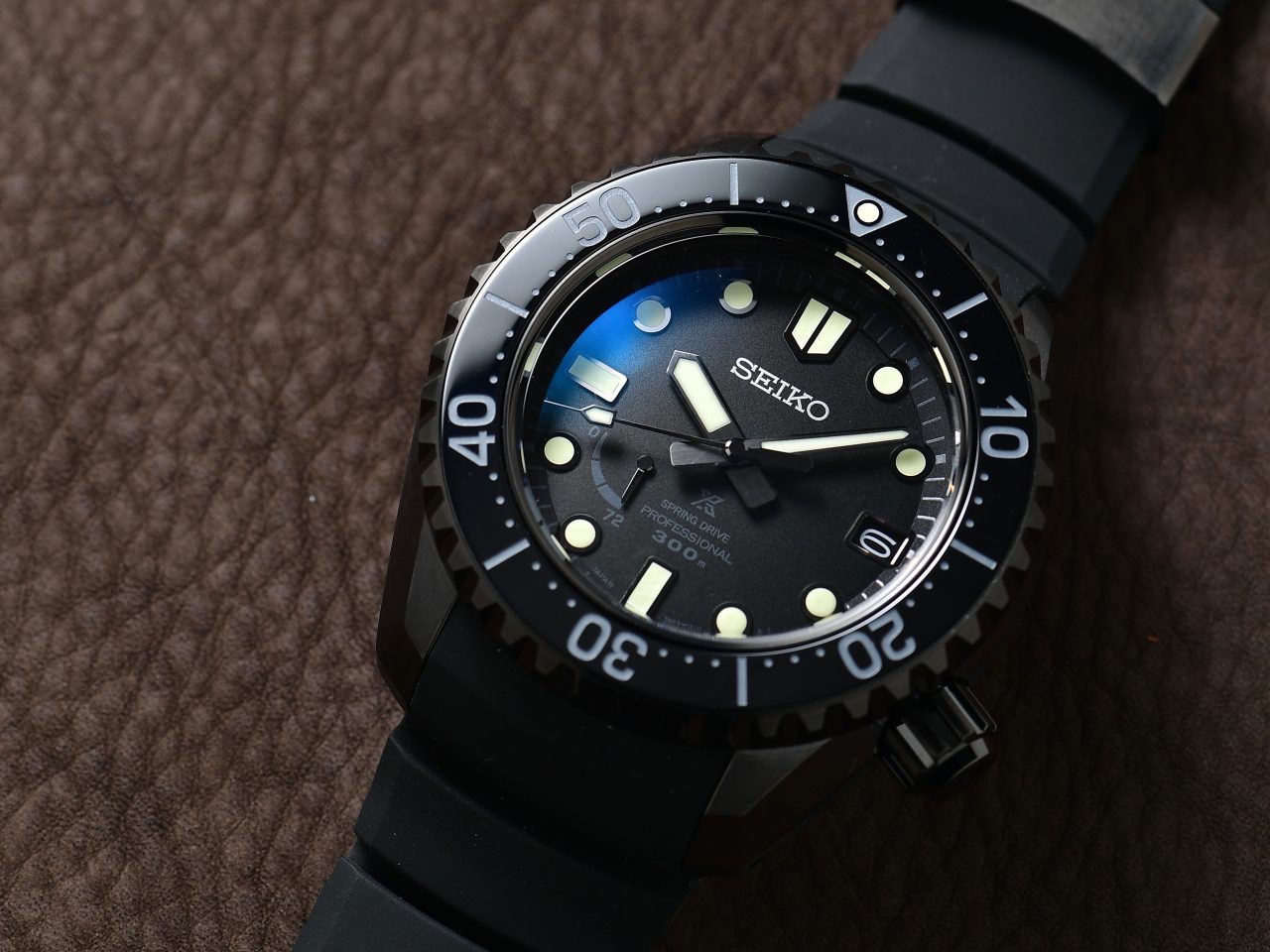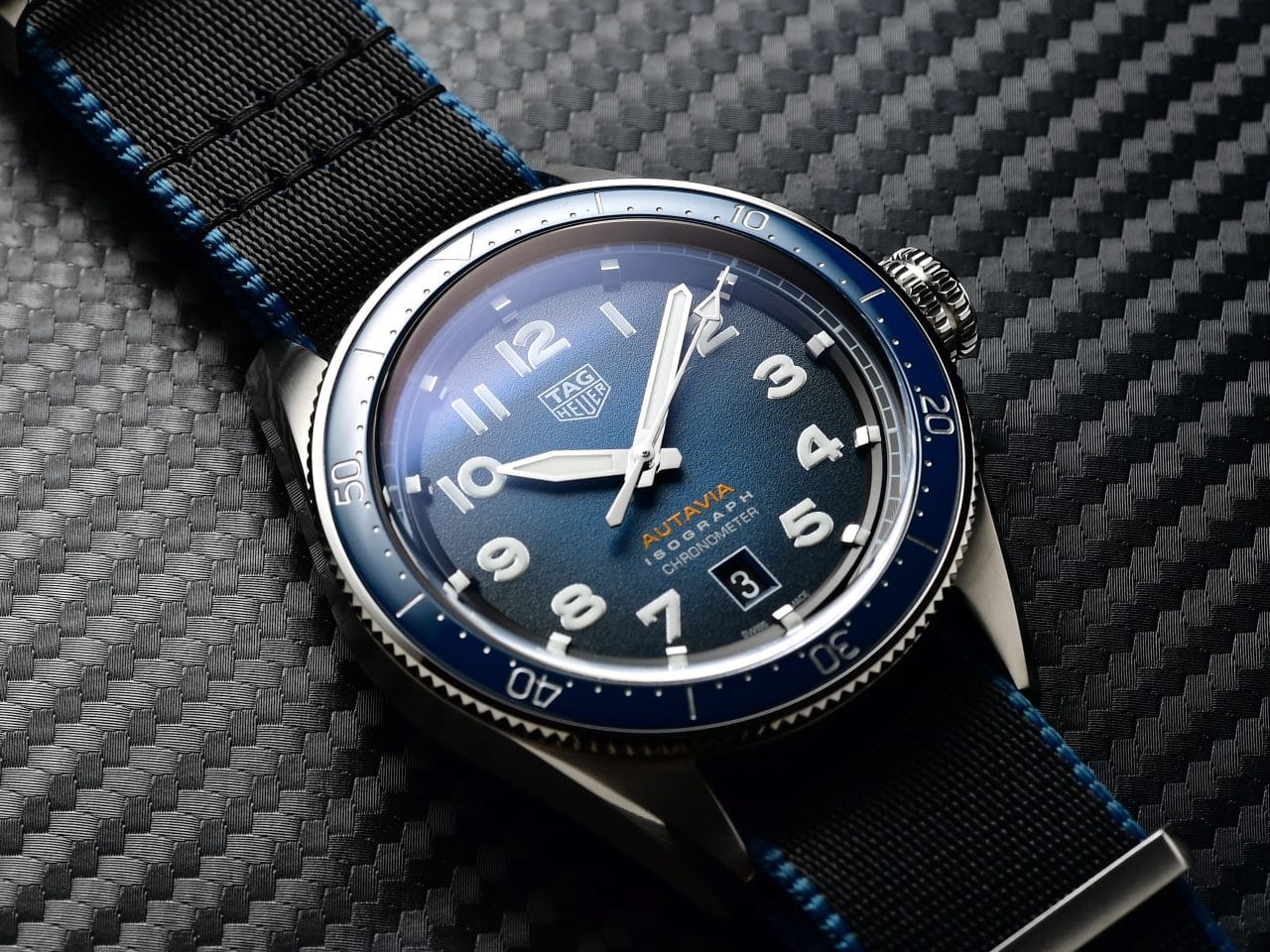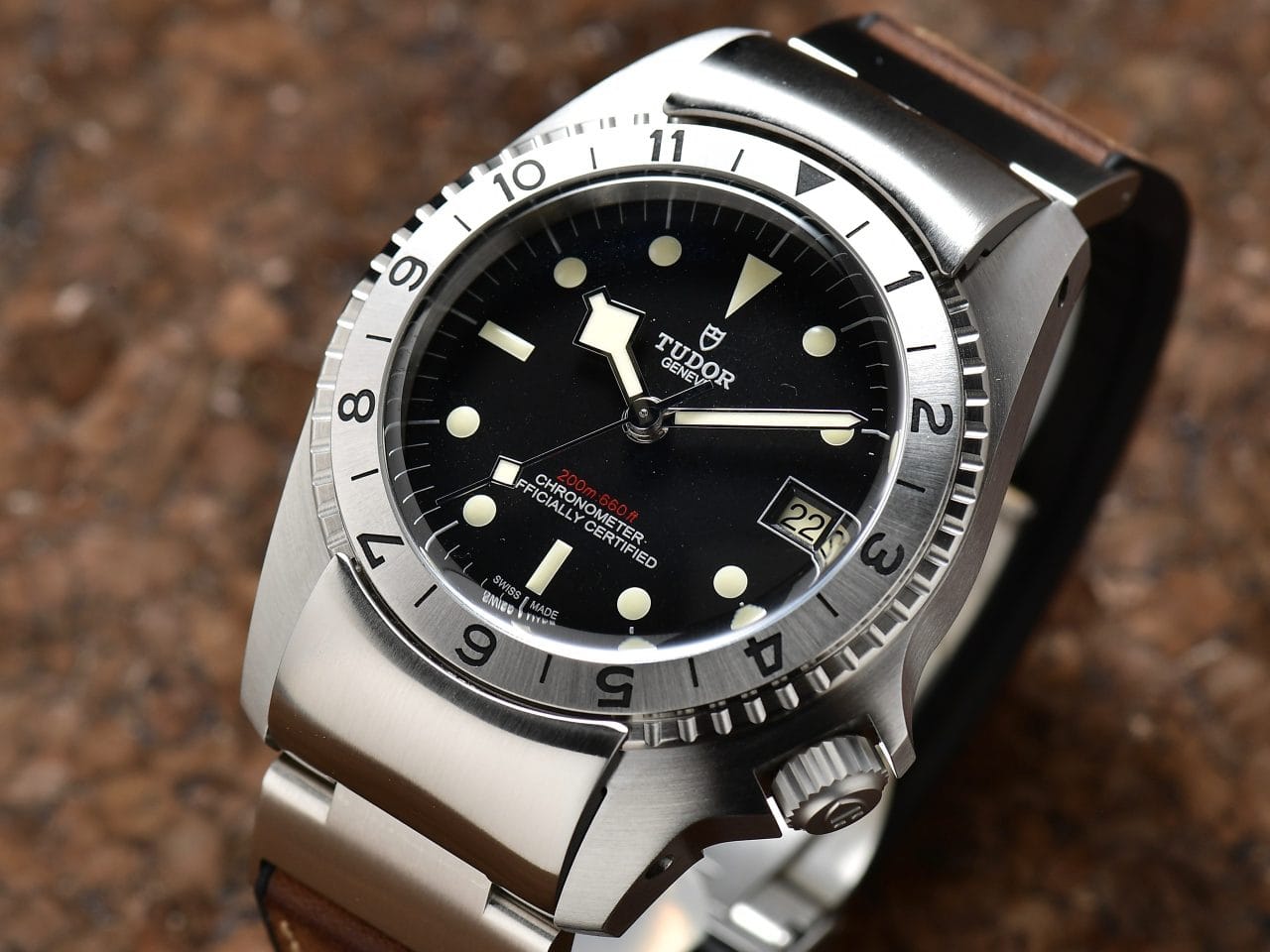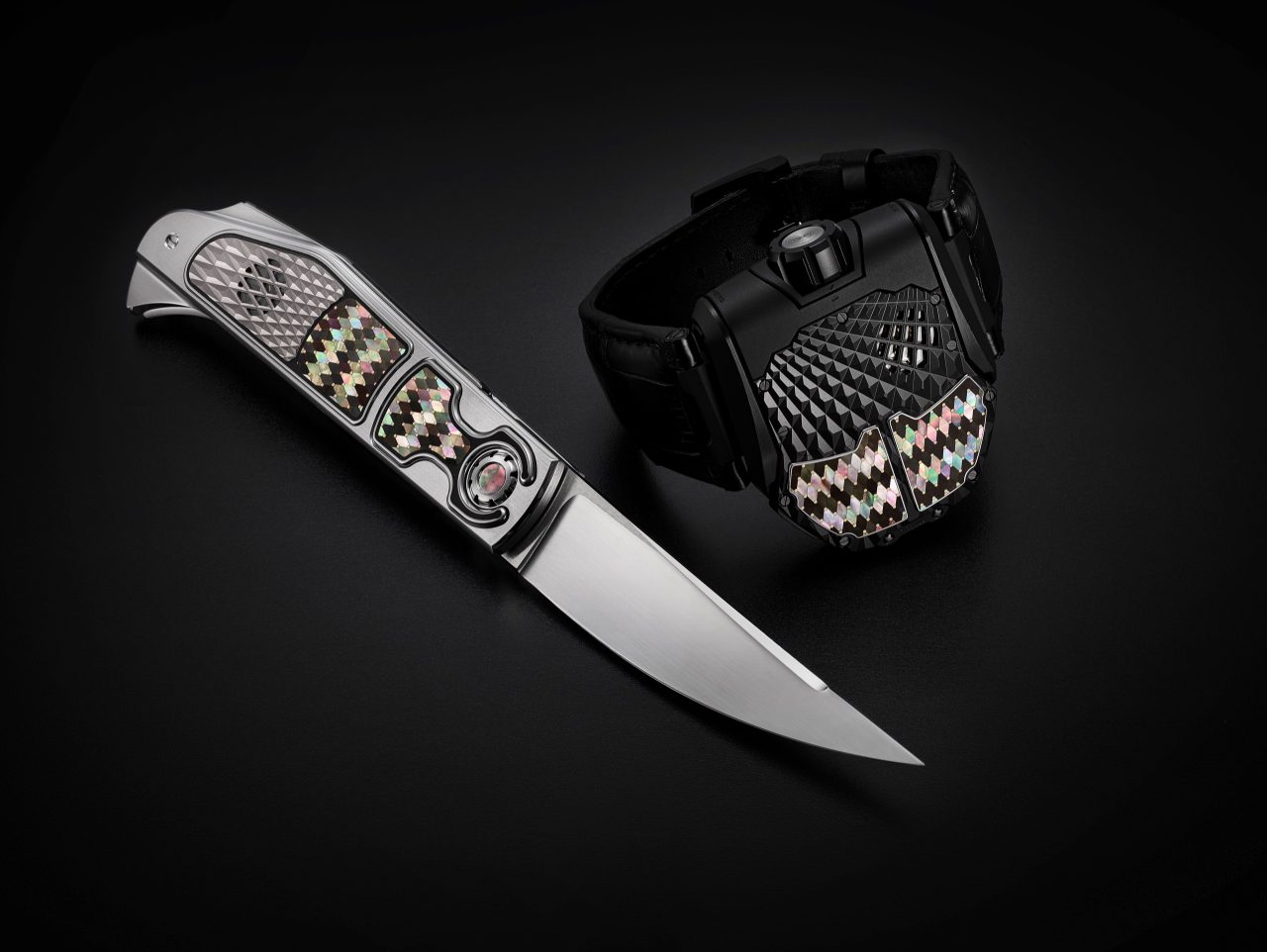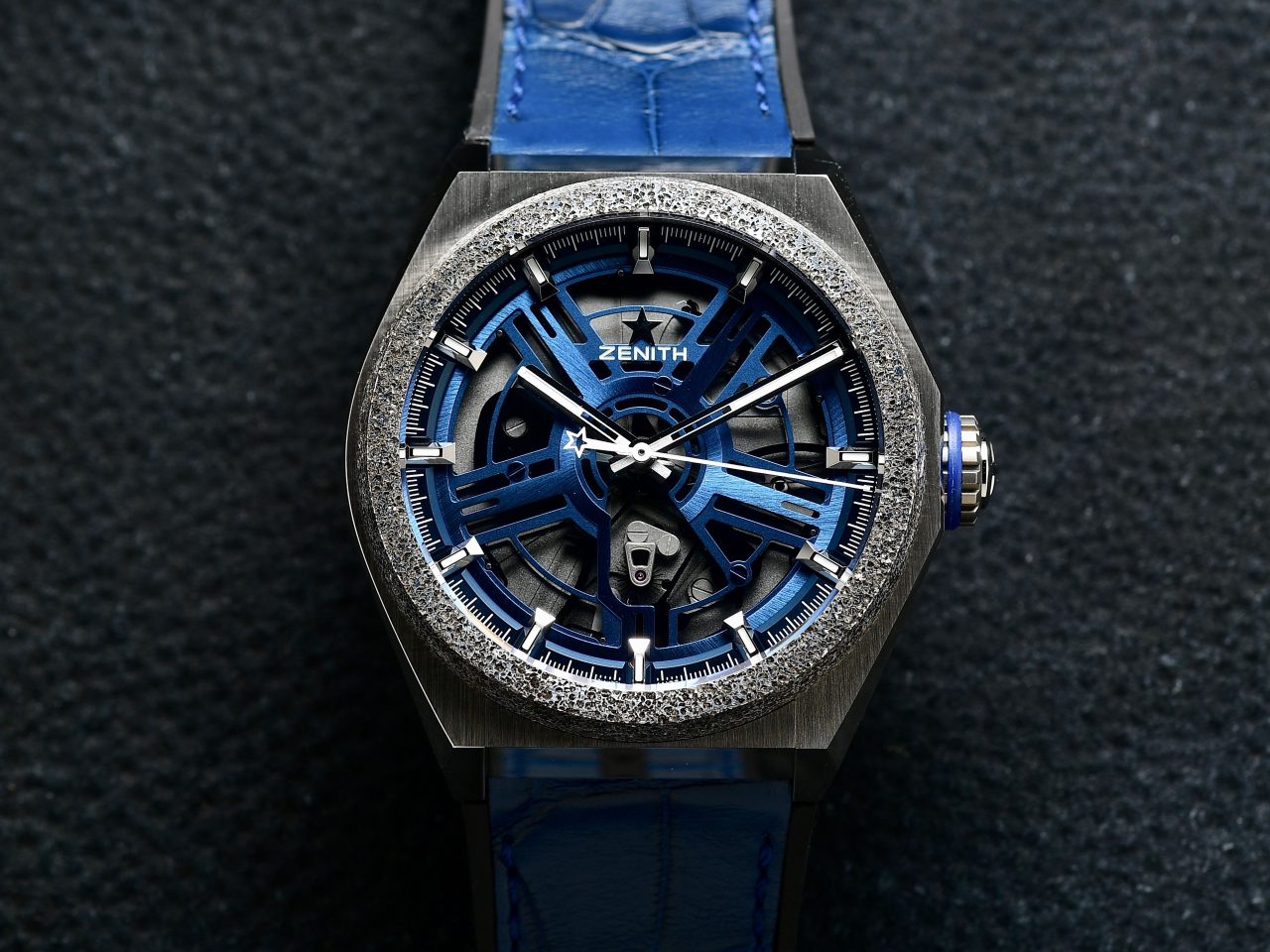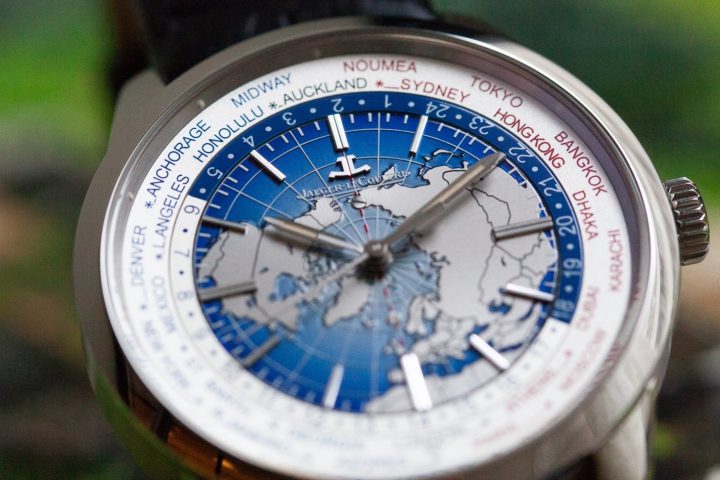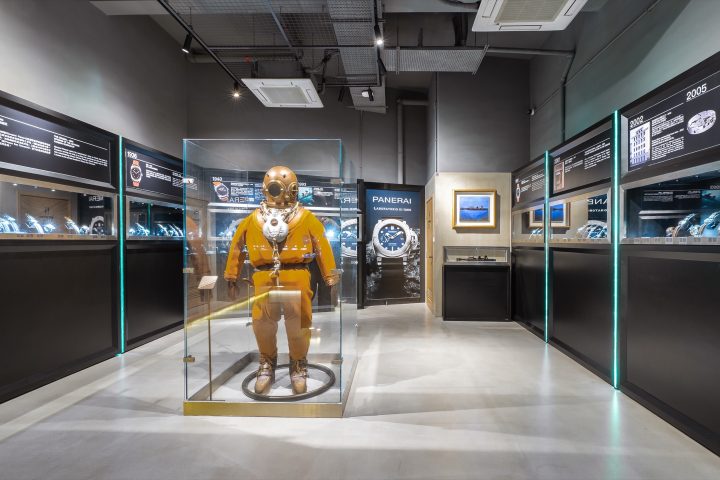With so many questions surrounding the future of the fair being asked during Baselworld, sometimes it was hard to focus on the watches themselves through all the noise. While we will give some thoughts as to how the show felt overall and what things might look like in 2020 in a later piece, for the time being, let’s focus on the positive aspects: the releases that really stood out.

Angelus – Diver U50 Black
The pragmatist in me has always questioned the idea of putting a tourbillon into a diving watch, or, to be entirely honest, in most sports-oriented watches. The mechanism’s role in chronometry is well documented, but it’s certainly not one that would seem apt for more active or extreme applications. Over the years, the tourbillon has become a more regular feature in day-to-day timepieces, and I’ve become accustomed to it, but to take it diving still seems somewhat of a stretch. And yet, the Angelus Diver U50 Black caught my eye. Perhaps it’s the fact that its A-300 calibre is designed from its inception as a skeletonised movement that lends it an aesthetic balance that integrates the tourbillon and the other components very well. I also find the black treatment and the titanium case appealing, as they both contribute to making the 46mm U50 very comfortable on the wrist. It’s still a diving watch through and through, with a 300m water resistance rating, a helium escape valve and a unidirectional inner rotating bezel. SL
Breitling – Navitimer Ref. 806 1959 Re-Edition
Reissues of a brand’s classic model is not a new concept, even those that are millimetre perfect exacting executions such as the Omega Speedmasters, Seamaster and Railmaster Trilogy of 2017. o see it coming from Breitling though, now owned by the private equity firm CVC Capital Partners and under the leadership of Georges Kern, was rather surprising on the surface. But with a bit of digging, one realises that they have a heritage manager with a wider remit than at other brands, and have retained a well regarded collector/scholar as a consultant, and the logic becomes clear. For a manufacture with so much heritage it was satisfying to see Breitling taking these steps, and while a limited edition of 1959 pieces will nicely add to the balance sheet, what it signals to the market is far more valuable: Breitling cares about its history, and would love to share it with many more people than just its ardent collectors, in a precise and respectful way. NB
Bulgari – Octo Finissimo Chronograph GMT Automatic
Bulgari has been something of a roll in recent years, with the Octa Finissimo forming a fantastic foundation for a whole range of watches that have been particularly well received by the market. This year’s highlight for the brand was a record breaking ultra-thin automatic chronograph with second timezone. Produced in the same matte-finished titanium as a number of other watches in the line up, the combinations of functions and aesthetics have been well managed, with the outer ring of the subsidiary dials removed to simplify the design, while still providing clarity. The minimal thickness has been achieved in part by using a peripheral rotor for the self winding, providing the added advantage of not obscuring the movement, giving an uninterrupted view through the exhibition case back. NB
Chopard – LUC XPS Twist QF
As the saying goes, the devil is in the detail, which certainly applies to the Chopard LUC XPS Twist QF. You start with decrypting its name; ‘LUC’ refers to Louis Ulysse Chopard, who founded the brand in 1860, and is the moniker that’s used for its haute horlogerie collections. There is no specific explanation given for ‘XPS’, although we can surmise that it denotes the more classical watches. ‘Twist’ refers to the fact that the calibre is slightly rotated within the case, such that the crown is at 4 o’clock, and the seconds subdial is off-centre. ‘QF’ is for “Qualité Fleurier”, a certification that was developed by the brands based in Fleurier, with stringent requirements on manufacturing, which has to take place entirely in Switzerland, finishing, precision, and durability. These may seem as a given, but the standards set by the Fleurier Quality Foundation are stringent, and few watches receive the full QF certificate. In addition, the case is made of Fairmined gold, which is sourced from companies that ensure the ethical treatment of their workers and the environment. Combined with the subtle sunray finish on the dial which radiates from the seconds subdial, this is truly a timepiece for those who appreciate a more subtle approach to the fine art of watchmaking. SL
Ferdinand Berthoud – Chronomètre FB1L
Due to the extremely limited production numbers of the brand and the high demand for the pieces once they come off the watchmaker’s bench, it proves extremely challenging to lay a hand on a Ferdinand Berthoud in real life. So it was a privilege to have a play with a selection of their watches at Baselworld, from the original interpretation FB1, now presented in a very cool new patinated dial variation, to the new FB1L, containing a hyper-accurate moon phase complication. The design language is extremely distinctive and proves particularly interesting for this with a passion for marine chronometers, not only constructed in a similar fashion with pillars separating plates, but also featuring devices such as a chain fusée and tourbillon in the quest for rate stability. The case dimensions aren’t for all, but the level of finishing and consideration that has gone into the creation of their pieces is certainly something that should be applauded and inspected up close. NB
Grand Seiko – 20th Anniversary of Spring Drive
Grand Seiko are on something of a roll in recent years, with enthusiasts having a much clearer understanding of what the brand represents, as well as a deeper appreciation for what the Japanese touch means in high-end watchmaking. Previously, the pieces produced by the Micro Artist Studio bearing the Credor name, such as the incredible Eichi II, have been the pinnacle of what the Seiko group produces, but now a number of watches wearing the Grand Seiko name have been produced at the same hallowed benches, including the SBGD201 Spring Drive with eight-day power reserve, and this year’s additions, SBGZ001 and SBGZ003. The SBGZ001 is the stand out of the two references, with its textured case and dial produced by making small cuts into the material with a rotary tool. The 9R02 calibre inside bears striking similarities to the 7R14 used in the Eichi II, but now with a longer power reserve, thanks to a barrel that contains two main springs, and more elaborate finishing, such as wider bevels and deep interior angles. The SBGZ001 is limited to 30 pieces, and for those with more conservative tastes, the SBGZ003 is limited to 500 pieces. NB
Greubel Forsey – GMT Quadruple Tourbillon
Although Greubel Forsey has been primarily exhibiting at SIHH in Geneva over the past few years, they had one more watch to present, which they did with a space at the Three Kings, rather than in Baselworld itself: the GMT Quadruple Tourbillon. It’s a natural evolution for the brand that has been obsessed with finding the best technical solution for the tourbillon escapement and ensuring that its chronometric performance is adapted to today’s environment on the wrist and the ensuing changes in position, as opposed to its forefather’s application as a pocket watch principally held vertically. Combining the quadruple tourbillon mechanism with the brand’s interpretation of a GMT through a miniature globe rotating within the watch represents a mastery of not only the technical complexity, but the stellar hand-finishing which is part-and-parcel of Greubel Forsey’s raison d’être. It’s mesmerising to see the concentric angled tourbillons on each side of the globe, performing their synchronised ballet, with the inner tourbillons rotating once per minute while the outer tourbillons taking a more leisurely four-minute rotation. The GMT function manages to squeeze three time zones onto the watch display, with the primary time display on the main subdial, the second time zone shown below it, adjustable in one-hour increments via a pusher, and UTC shown on the back. SL
Hautlence – Sphere
There are only so many ways that hours and minutes can be legibly displayed, whether it’s digital or analogue. I’m always impressed whenever a watchmaker can devise a different methodology, which Hautlence has achieved with its new HL Sphere, the name evidently chosen due to the shape of its hour display. The brand’s rectangular case lends itself perfectly to the juxtaposition of the rotating sphere on the left and the retrograde minute hand on the right. At the top of every hour, the minute hand swings back up, while the hour sphere seems to spin on itself to display the new hour digit. It’s a watch that truly needs to be seen to be appreciated, as it’s so unexpected and whimsical, belying its technical nature and the ingenuity that was required to not only conceptualise the Sphere but to implement it. The long “travel” of the sphere ensures that the moment when the hour switches is not so short that you may think you will have missed it; you may still be tempted to take it off your wrist and advance the time manually, just to see the sphere go through its motion. SL
Hublot – Classic Fusion Ferrari GT
In my review of the Hublot Techframe Ferrari Tourbillon Chronograph, the previous ground-up project between design team of Flavio Manzoni at Ferrari and those based in Nyon, my only criticisms were that perhaps a simpler watch without tourbillon and more of a focus on the chronograph function, as well as being a bit smaller to suit thinner wrists, would be the ideal Hublot Ferrari watch. Fortuitously, my wishes were answered this year with the release of the Classic Fusion Ferrari GT; it has a smaller case which fits extremely well thanks to the curved profile, and a chronograph function with oversized minute record (subtly containing a date window) to hugely increase legibility over the Techframe. Thanks to the removal of the tourbillon, the pricing is also surprisingly affordable (relatively speaking of course), and the design details are really well executed: the cavallino on the dial is small and carefully integrated, the chronograph hand is in rosso to match the start/stop button, and the crown locks down with a bayonet fixing to make sure the prancing horse is always upright. Available in carbon, King Gold, and my personal favourite execution of titanium, the central portion of the case is suspended due to the way the ceramic bezel is screwed to the outer section, creating a wonderful feel of airiness. This is a watch that I am really looking forward to doing a more detailed write up on later. NB
MB&F – LM FlyingT
Following the evolution of MB&F has been one of the most enjoyable elements of the watch industry in recent years. Just when you think Mr. Büsser and his cohort of accomplices can’t dream up anything more wild, you are invited on to their stand at SIHH or Baselworld and shown something that brings a wide grin to your face. This year, it was the LM Flying T, a watch which was presented in a selection of diamond set forms, but due to its compact 38.5mm case diameter, would make for an interesting men’s piece sans diamonds down the line. With its high domed sapphire crystal covering a wonderfully three-dimensional movement, topped by a flying tourbillon, it will no doubt provide many hours of entertainment for new owners, just in the course of inspecting the calibre in motion. A wonderful development of the LM series, we are extremely excited to see what comes next from MB&F. NB
Patek Philippe – Reference 5231 Enamel World Time
While the 5212 weekly calendar in steel, a revised Nautilus 5726 with blue dial, and the new chronograph reference 5172 were the obvious talking points from the house of the Calatrava cross, my personal favourite was the reference 5231 world time with enamel dial. The previous reference 5131 was a watch I always admired but struggled with due to its larger size engraving on the bezel. When the reference 5230 was released, it was a watch that I initially didn’t give much consideration to due to it feeling like a relatively iterative improvement, but this new release really stood out. I think it comes down to the smaller case size being so well proportioned for more petite wrist sizes, the lug design which is clearly inspired by the legendary 2523, and the lovely cloisonné enamel map displaying North America, Europe and Africa making the dial feel more lively, that comes close to creating a near ideal modern interpretation of Louis Cottier’s work. Now if only the push button was replaced by a second crown to bring it even closer to Patek Philippe’s greatest world time watch (hint, hint Monsieur Stern). NB
Patek Philippe – Reference 5212A Calatrava Weekly Calendar
Patek Philippe naturally generates much speculation before Baselworld, and perhaps even more discussion after the fair, once the new watches have been properly introduced and are no longer the realm of wild conjecture. There invariably seems to be one watch that polarises the community; it could easily have been the reference 5520P Alarm Travel Time, with its prominent crowns, but the watch collecting community has had more to say about the reference 5212A Calatrava Weekly Calendar. On the surface of it, it’s an “ordinary” (if I may use that term respectfully for a Patek Philippe) calendar watch in steel. However, collectors have focused on two aspects that go against the grain for a Calatrava: the numerous hands used to display the time and calendar indications, and the font used on the dial. The week number, which is also calibrated with the relevant month, and the weekday are displayed by hands, as are the hours, minutes and seconds; the design of the hands makes it such that it’s not overly obtrusive (to my eyes), certainly quite legible. The font though for the week, month and the numerals appear to have been hand-written in block letters; in fact, the font was derived from the handwriting of one of Patek Philippe’s designers. Whilst I personally find it an interesting and whimsical detail, classicists have been up in arms about it. To each their own, I can only applaud the brand for showing a more playful side to its watchmaking. SL
Rexhep Rexhepi – Chronomètre Contemporain
It seems rather futile featuring a watch on this list which is long sold out, but the message conveyed by it and its maker about what might be coming next certainly warrants further discussion. For me, Rexhep Rehepi ranks as one of the most exciting new watchmakers to have emerged in a considerable period of time, with an affable and humble demeanour, he is clearly extremely passionate and motivated by his profession, someone who lives and breathes watches, comfortable going deep on subjects from chronometer performance to the importance of the human touch in intricate finishing, with many other stops in between. Perhaps more impressively for an independent watchmaker, he also appears to really understand what cohesive design and wearability consists of, and is happy to go in a completely different direction when the market requires it, as proven with the move from styling cues of Akrivia, to those bearing his own name on the dial. I am very much looking forward to seeing what the future holds for the brand. NB
Rolex – 36mm Datejust and Day-Date
There were multiple new releases from Rolex this year that warranted investigating, including the new 42mm Yachtmaster, GMT-Master with black and blue bezel fitted on a Jubilee bracelet, plus a two-tone Sea-Dweller, the first time a watch bearing the iconic name has been offered in a precious metal. But the highlight for me was seeing a renewed focus on the smaller 36mm case of the Datejust and Day-Date. Thanks to its Goldilocks proportions that have remained close to those of the famous vintage references including the 1601 and 1803, it has long been a favourite for men and women, representing a truly unisex size. While externally, there is somewhat of a classic feel, internally it is extremely modern, with the Chronergy escapement protecting against magnetism and extending service intervals. My personal pick of the ranges would be reference 126324 with Jubilee bezel and bracelet contrasting a black dial, and for the Day-Date the obvious pick is the 128235 “rainbow”, but I would forego the diamond bezel and bracelet (perhaps they are just a bit too much). NB
Rolex – Yacht-Master 42
Another brand that gets the rumour mill buzzing in the run-up to Baselworld, Rolex fans try to predict what new watches will be worthy of generating long waiting lists. Of course, the steel sports models are generally popular, but if you’re willing to look beyond them, the new Oyster Perpetual Yacht-Master 42 (to give it its full name) is certainly deserving of your attention. As you may have guessed, its 42mm case is a little wider, but it’s a welcome option for those who find Rolex’s classic sizes, well, too classic. It’s presented in white gold, which, when matched with its black ceramic bezel, black dial and black strap gives it a very monochromatically discreet outlook. The strap alone is an example of Rolex’s unparalleled attention to detail; it would be easy to say it’s rubber, but you’ll notice that Rolex never refer to it as such, saying it’s an Oysterflex bracelet, as there is a titanium and nickel alloy blade within that ensures that it retains the appropriate profile, and, combined the “fins” that are moulded on the inside of the strap, make it particularly comfortable on the wrist. It might not get you the glares that a current steel sports Rolex would, but you’ll certainly get a knowing glance from those who appreciate that you will have cast a wider eye on the brand’s 2019 offerings. SL
Seiko – Prospex LX
There is a clear distinction for Seiko (the company) between its various lines now, with Grand Seiko being treated as a separate brand rather than a collection. That’s not to say though that Seiko doesn’t have greater ambitions for its mainstream offerings, as evident in the Prospex LX collection introduced at Baselworld. Its roots date back to Seiko’s first diving watch from 1965, which over time has evolved from its aquatic vocation to a collection that spans air, land and sea, or what some would call “tool watches”. The “LX” part of the name is derived from the latin word for light, or “lux”, and refers to the fact that Seiko wanted to not only bring more attention to the Prospex, but also to give it a new aesthetic appeal. For that, they brought it none other than Ken Okuyama, one of Japan’s best-known industrial designers, whose projects have included a number of Japan’s Shinkansen bullet trains, and numerous cars, which we hold dear at Blackbird as he worked on a some of Ferrari’s recent legends, such as the Enzo. He brought his keen eye and experience on the interplay of light and the various surfaces of the object in question, in this instance, the new Prospex LX collection. There are three models, on each of the core themes of land, air and sea, all in titanium but in two versions; with or without a black coating. Two of the models feature a GMT function, the land version with a compass bezel whilst the air version gets a 24-hour bezel; the third model gets larger hands and round indexes as a diving watch. All are equipped with a spring drive calibre, Seiko’s own mechanism which combines a mechanical movement with a quartz oscillator. SL
Tag Heuer – Autavia Isograph
It’s always a challenge whenever a brand decides to use a historic name in a modern collection. Tag Heuer certainly felt it when it introduced the new Autavia range at Baselworld. Perhaps it’s because the brand chose to unveil the time and date models initially, whereas the Autavia has historically been closely linked with racing chronographs. There is little doubt that the collection will evolve in the not-too-distant future, but in the meantime, the new Autavia Isograph certainly has a lot of potential. The most interesting aspect on a technical basis is what gives it the new Isograph name: the carbon composite hairspring that sees its first application in large series production. This component is at the very core of chronometry, for it dictates the precision and regularity of a mechanical movement. The metal alloys that are traditionally used for hairsprings are considered state secrets by their producers, and it’s one of those components that still relies on just a handful of suppliers (yes, even those who espouse their in-house capabilities – the ones that can also do the hairspring a very few and far between). The goal is to be able to make it consistently, to exacting specifications and in significant quantities, for the inherent variability in production is a large part of why a mechanical watch requires adjustments, as the interplay of all the gears literally revolves around the hairspring. If you can minimise this variability, it significantly reduces the time and cost in producing a mechanical watch. Whilst it might not set hearts racing by the complexity or finishing of its calibre 5 movement, the Autavia Isograph nevertheless represents Tag Heuer’s new flagship collection, with which it hopes to attract a new legion of followers through a high precision yet eminently affordable timepiece. SL
Tudor – Black Bay P01
Not dissimilar to the situation that unfolded around the Audemars Piguet Code 11.59 collection during SIHH, it proved extremely popular to bash the new Tudor P01 in the comments section of blogs and Instagram posts. And again, unsurprisingly it was a different story when the watch was held in hand and presented with a bit of context, much like Code 11.59. While it is understandable that the watch is polarising (it is clearly not a watch for everyone), there is certainly a healthy market for it as many who saw it in the metal commented that they will be ordering it. Part of the hysteria around the watch was the fact that it had long been assumed that the design was fake, a story that has been proliferated by multiple Frankenstein models that have shown up at questionable auction houses over the years, with the incorrect “US MARINE” engraving to the back, and a case that was almost certainly made in Asia by an enterprising individual who found a copy of the patent in the Swiss database. Tudor were kind enough to put the whole story to rest by displaying the original prototype they produced in 1968 for assessment by the US Navy, with its ingenious bezel locking system, that could actually be released at both 6 and 12 to allow removal of the bezel for cleaning. Although the feature to disassemble the top of the watch isn’t present on the new version, the locking device functions and adds a huge amount of charm to the watch. This is one of the releases I am excited to spend a week or so with on the wrist. NB
Urwerk – UR-T8 Colibri
Urwerk’s timepieces have always been about much more than the sum of their parts. There is a tactility associated with them that requires hands-on time, and cannot be fully explained through words alone. At Baselworld, the brand revealed a collaboration with an entire other world that I wasn’t aware of: fine knives. Similarly, these are objets d’art that transcend their basis purpose, and Urwerk collaborated with one of the masters of fine knives, Emmanuel Esposito, an Italian who is entirely self-taught. His knives are not only expressions of him as an artist, but examples of his excellence as a craftsman, for you only need to hold them, open and close them to appreciate the skill required to create them; it’s understandable then that he only makes 10 or so each year. For 2019, Esposito worked with Urwerk to go beyond knives, and to apply his knowledge to a pièce unique, the UR-T8 Colibri. The mother-of-pearl pattern that’s applied to the case of the UR-T8 is painstakingly crafted to reflect light in a specific way, one that Esposito developed as one of his trademarks. The watch naturally comes with one of his Colibri knives, with the matching pattern of mother-of-pearl, and also an engraving pattern on the knife handle that echoes the watch case itself. SL
Zenith – Defy Inventor
Although we may occasionally highlight the fact that the watch industry does not innovate all that much, there are actually good fundamental reasons for that; mechanical watches rely on the careful interaction and calibration of their various components, and it’s not all that easy to reinvent the wheel, as it were. Whilst you may be able to dream up a completely different approach, it’s an entirely different mountain to climb when it comes to serial production and long-term performance and reliability. This is what makes the Zenith Defy Inventor one of the standouts for this year. Two years ago, Zenith famously introduced the Defy Lab, a concept watch that premiered a completely new oscillator that effectively replaced a significant number of parts required in traditional movement construction. Through the principles of mechanical compliance, which Guy Sémon said required a multi-page equation to fully explain, the silicon-based oscillator looks like it’s vibrating at high speed, rather than swinging back and forth likes a traditional hairspring and balance wheel assembly. The Defy Lab was produced in series of 10 pieces only, with the promise that its unique oscillator could be industrialised and fitted to a large series of watches in the near future. That time has come in the shape of the Defy Inventor. The aluminium composite known as aeronith is still present, but only in the bezel, rather than the whole case, and the oscillator actually vibrates at a higher frequency of 18Hz, rather than the Lab’s 15Hz, with only a minimal impact on the power reserve. There are other elements pointing to a technical evolution, thanks to the learnings derived from the initial 10 Lab watches, such that the Inventor will be produced in a few hundred pieces. It’s a clear statement that Zenith intends to return to the forefront of chronometric innovation, as it was when its famed El Primero movement was first presented half a century ago. SL
